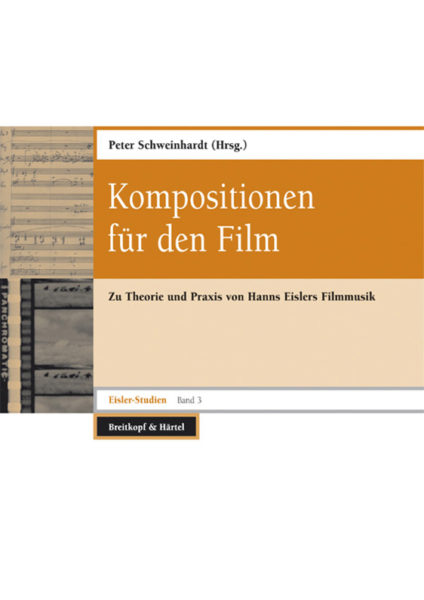Hanns Eisler (1898-1962) Eisler-Studien Band 3
Beiträge zu einer kritischen Musikwissenschaft herausgegeben im Auftrag der Internationalen Hanns Eisler Gesellschaft
Zur Theorie und Praxis von Hanns Eislers Filmmusik
280 Seiten | 17 x 24 cm | 580 g | ISBN: 978-3-7651-0383-4 | Broschur, Fadenheftung
Immer stärker gerät in den letzten Jahren die Filmmusik Hanns Eislers in den Blickpunkt des Interesses: durch bedeutende Quellenfunde und DVD-Editionen sowie neue musik- und filmtheoretische Forschungsansätze. Nachdem lange das gemeinsam mit Theodor W. Adorno verfasste Buch Komposition für den Film das Bild des Filmkomponisten Eisler bestimmte, werden nun seine über 40 Filmpartituren selbst zum Gegenstand eingehender Untersuchungen.
Die vorliegende Aufsatzsammlung spannt einen weiten Bogen von Niemandsland (1931) bis zu Esther (1962). Die zwölf Autoren aus Deutschland, Großbritannien, Mexiko, Spanien und den Vereinigten Staaten beziehen neben der Frage, inwieweit Eisler hierbei seine eigenen Forderungen eingelöst hat, sehr unterschiedliche Konzepte der Filmmusikanalyse in ihre Betrachtungen ein. So erstaunt es nicht, dass die Autoren der dritten Eisler-Studien zu erfrischend unterschiedlichen und höchst lesenswerten Ergebnissen gelangen.
| Ahrend, Thomas | ‚Wir werden ihnen unser Gesicht nicht zeigen …’. Eislers Musik zum Fernsehfilm Esther | |
| Dahin, Oliver | An Embedded Narrative: Hanns Eisler’s Score for Council of the Gods | |
| Faßhauer, Tobias | Film – Musik – Montage. Beobachtungen in Niemandsland | |
| Gall, Johannes C. | A Rediscovered Way to Describe Rain: New Paths to an Elusive Sound Version | |
| Heldt, Guido | Grenzgänge: Filmisches Erzählen und Hanns Eislers Musik | |
| Kolb, Roberto | Four Ways of Describing Death: Painting, Filming, Narrating and Scoring Mexican Funeral Scenes | |
| Neumeyer, David & Buhler, James | Composing for the Films, Modern Soundtrack Theory, and the Difficult Case of A Scandal in Paris | |
| Salmon, Barry | [RE]Composing for the Films: The Problem of Praxis | |
| Schweinhardt, Peter | Ein guter Filmkomponist? Überlegungen zur Spielfilmmusik Hanns Eislers | |
| Viejo, Breixo | Neue Musik für einen befreiten Film. Giovanni Fuscos Filmmusik zu Alain Resnais’ Hiroshima mon amour | |
| Wlodarski, Amy Lynn | Excavating Eisler: Relocating the Memorial Voice in Nuit et Brouillard |










